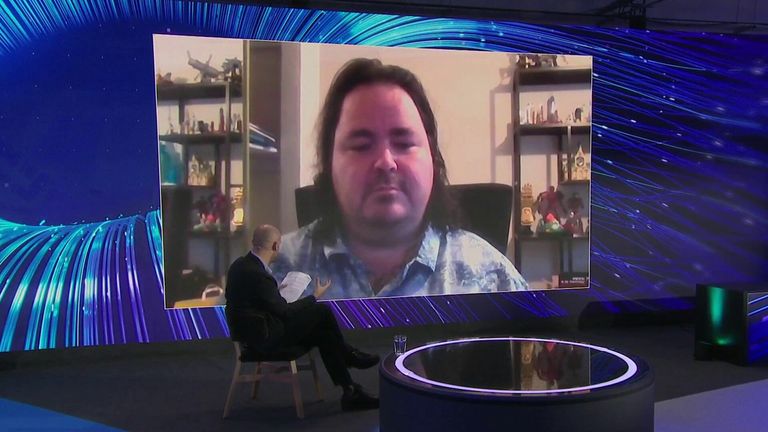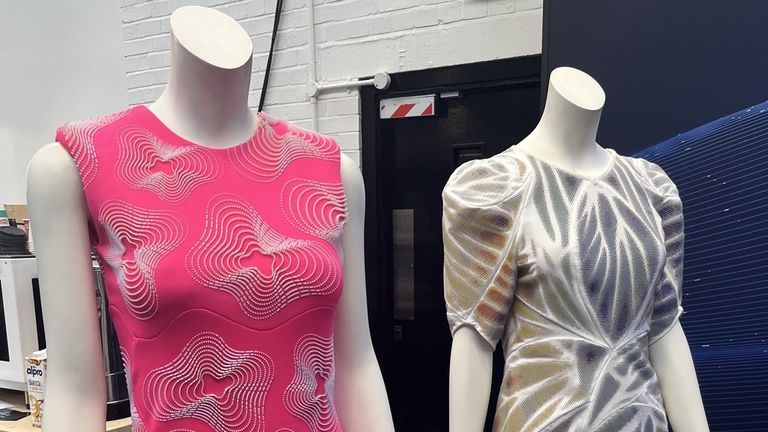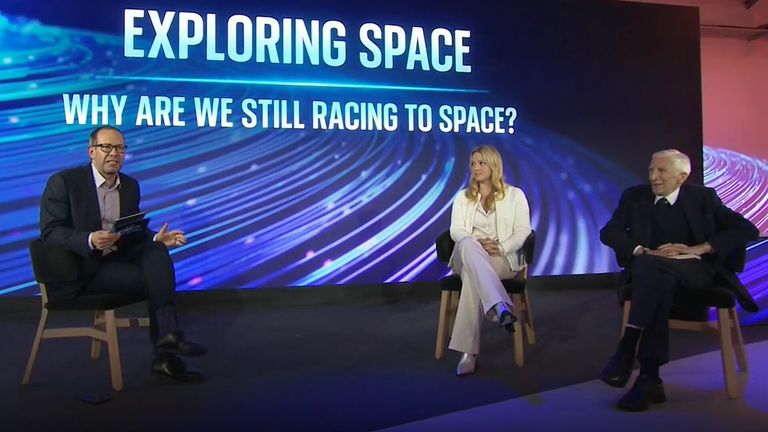From the UK’s role in the space race and future wars, to 3D-printed burgers and pretzel-delivering robots, Big Ideas Live has it all covered when it comes to how science and technology are impacting our world.
Visitors have the opportunity to try some innovations they can welcome at home, including online shopping Metaversewhile the flagship panel delves into big tech, social media and more.
One such group produced the Facebook’s History of Handling Election Disruption Contentalthough The future of Twitter under Elon Musk is a theme.
We don’t blame you if you can’t keep up – here are five highlights you might have missed.
Big Ideas Happen
Ex-Google engineer insists chatbot AI is sentient
Ex-Google engineer Blake Lemoine speaks to Sky News data and forensics reporter Tom Cheshire On AI jobs, after he was fired this year Because it claims its new chatbot is sentient.
He used his presence on the show to double down on his claim, claiming it gave him “the most complex conversation I’ve ever had about perception.”
“It knows what it is, what its relationship is to the rest of the world, it’s not human, and it has very complex thoughts and perspectives, topics that I’ve never encountered before,” he added.
read more:
We put Google’s new chatbot to the test
3D printing brings you food and fashion
One of the technological innovations on display was 3D printed meat – yes, really.
Edwin Bark, Redefine Meat’s senior vice president, explained that the process can “replicate very complex meat structures,” something most mainstream plant-based options can’t.
Elements such as fat, blood and muscle can be considered to create different “cuts” of meat.
And if that wasn’t enough, 3D printing was also showcased as a way to enhance fashion.
Ofer Libo from Stratasys explains how a process called polyjets produces smooth, precise parts that can be added to fabrics, giving designers “a whole new set of tools to work with”.
“It enables you to create very detailed designs in terms of geometry, light and texture,” he adds.
More highlights from our live blog:
Mirror, mirror, wall… how about my squats?
Be careful! Robots are serving chocolate pretzels!
Britain’s first rocket launch is all around us
It’s a big week for space — NASA’s historic Artemis 1 launch It happened in the early hours of Wednesday, shortly after the UK alerted Spaceport Cornwall host rocket launch.
Cosmic Girl, a modified Virgin Atlantic Boeing 747, will take off from the port near Newquay and will launch a rocket capable of sending satellites into orbit.
Melissa Thorpe, head of the Cornwall spaceport, told Sky News science reporter Thomas Moore that years of work had finally “come to fruition”.
“We’re very proud of what this will do for the UK,” she said, due to roll out this month.
read more:
Can the UK become a science powerhouse?
art jumping off the wall
One of the most striking exhibits is a distinctive painting by artist Tim Fowler.
Visitors are invited to scan a nearby QR code, which opens a clip of the Adobe Aero augmented reality app on your phone – promising to showcase Mohamad Aaqib’s work in 3D through entertainment.
Once you’ve scanned your surroundings with your phone’s camera, the artwork pops up, now in 3D on your device’s screen, scaled to match the environment – meaning anyone can view this beautiful work of art Take it home as a souvenir.
‘We’re a long way from killer robots’
Technology can be both frightening and exciting, and science fiction has certainly not done artificial intelligence much favor over the years.
But Nigel Inkster, former director of operations for MI6, asserts that we won’t soon have to worry about Terminator-style “killer robots”.
catch panel:
moderate social media
Can “clusters” unlock future technology?
Referring to the deployment of cyber capabilities in modern warfare, Mr Inkster said the conflict in Ukraine proved that 20th century tactics are still most effective.
“Russia decided that instead of using cyber means to destroy the infrastructure, it would be better to destroy it physically,” the former intelligence chief noted.
As for the Ukrainian army, they “defeated a much larger and ostensibly better prepared force through the skill of their ground commanders”.




